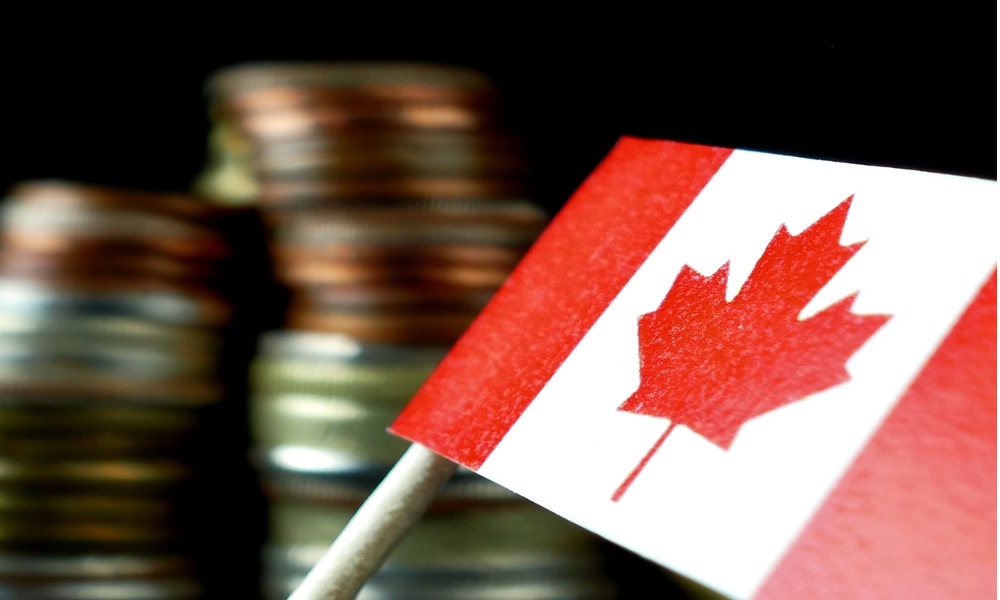Retail and public sectors drive GDP growth in July, while wildfires hinder transportation and tourism

Real gross domestic product (GDP) grew 0.2 percent in July, following essentially no change in June, according to data from Statistics Canada.
The services-producing industries increased by 0.2 percent, with the retail trade sector, public sector, and finance and insurance sector contributing significantly to this growth. Goods-producing industries edged up by 0.1 percent, with the utilities and manufacturing sectors leading the gains.
According to BNN Bloomberg, this marks the third month of zero growth in six months.
Markets have reacted to the latest data, with expectations of further interest rate cuts by the Bank of Canada to support economic growth. Economists now predict GDP growth at 1 percent annualized for the third quarter, below the central bank’s 2.8 percent forecast.
Bank of Canada policymakers are likely to continue focusing on growth, with a possible half-percentage point rate cut expected at the next meeting on October 23, 2024.
Governor Tiff Macklem has emphasized the need for faster economic expansion to maintain growth targets, raising the odds of aggressive rate cuts if economic conditions remain sluggish.
Overall, 13 of 20 sectors expanded during the month.
Retail trade, the largest contributor to the overall growth, rose by 1.0 percent, marking its second consecutive increase and the largest monthly growth rate since January 2023.
Motor vehicles and parts dealers, up 2.8 percent, contributed the most, driven by higher sales at new car dealers, offsetting the previous month’s decline. However, gasoline stations experienced a 1.8 percent contraction, tempering overall growth in the retail sector.
The public sector also posted growth for the seventh consecutive month, rising by 0.3 percent in July.
Public administration, which expanded by 0.4 percent, was the largest contributor to this growth, with local, municipal, and regional public administration leading the gains for the third month in a row. Educational services and health care and social assistance also grew by 0.2 percent each.
The finance and insurance sector increased by 0.5 percent, showing broad-based strength across the industry. Financial investment services, funds, and other financial vehicles rose 1.8 percent for the second consecutive month, driven by mutual funds and financial market activity.
Market volatility, fuelled by interest rate announcements and geopolitical instability, contributed to the sector’s growth. Banking, monetary authorities, and other depository credit intermediation expanded by 0.3 percent due to increases in mortgage and non-mortgage debt.
The utilities sector saw a 1.3 percent increase, marking the third consecutive month of growth, led by a 1.0 percent rise in electric power generation, transmission, and distribution. Warmer-than-usual weather in parts of Western Canada boosted electricity demand for cooling.
Natural gas distribution also rose by 3.9 percent, driven by increased industrial use.
Manufacturing grew by 0.3 percent in July, partially recovering from the decline in June. Non-durable goods manufacturing led the gains, increasing by 1.3 percent, more than offsetting a 0.7 percent decline in durable goods manufacturing.
Chemical manufacturing, up 4.1 percent, contributed the most to the sector’s growth, driven by pharmaceutical and medicine production, coinciding with higher exports.
Food manufacturing also rose by 1.2 percent, with grain and oilseed milling contributing the most as canola crushing reached record levels.
Wildfires impacted several industries, particularly transportation and warehousing, which contracted by 0.4 percent for the second consecutive month. Rail transportation declined by 4.6 percent due to suspensions in Jasper National Park, disrupting rail freight movements.
The mining sector saw a 4.8 percent decline in iron ore mining, coinciding with temporary mine closures in response to wildfires in Labrador and Northern Quebec.
However, the mining and quarrying (except oil and gas) subsector grew by 0.4 percent, supported by a 7.1 percent increase in copper, nickel, lead, and zinc ore mining, following the end of a labour strike in British Columbia.
Accommodation services declined by 2.0 percent, as wildfires at key tourist destinations in Western Canada disrupted activity at RV parks, recreational camps, and rooming houses.
The construction sector, down 0.4 percent, contracted for the second month in a row, driven by a 1.7 percent decline in non-residential building construction.
This Statistics Canada data indicates that GDP was essentially flat in August, as increases in oil and gas extraction and the public sector were offset by declines in manufacturing and transportation and warehousing.



